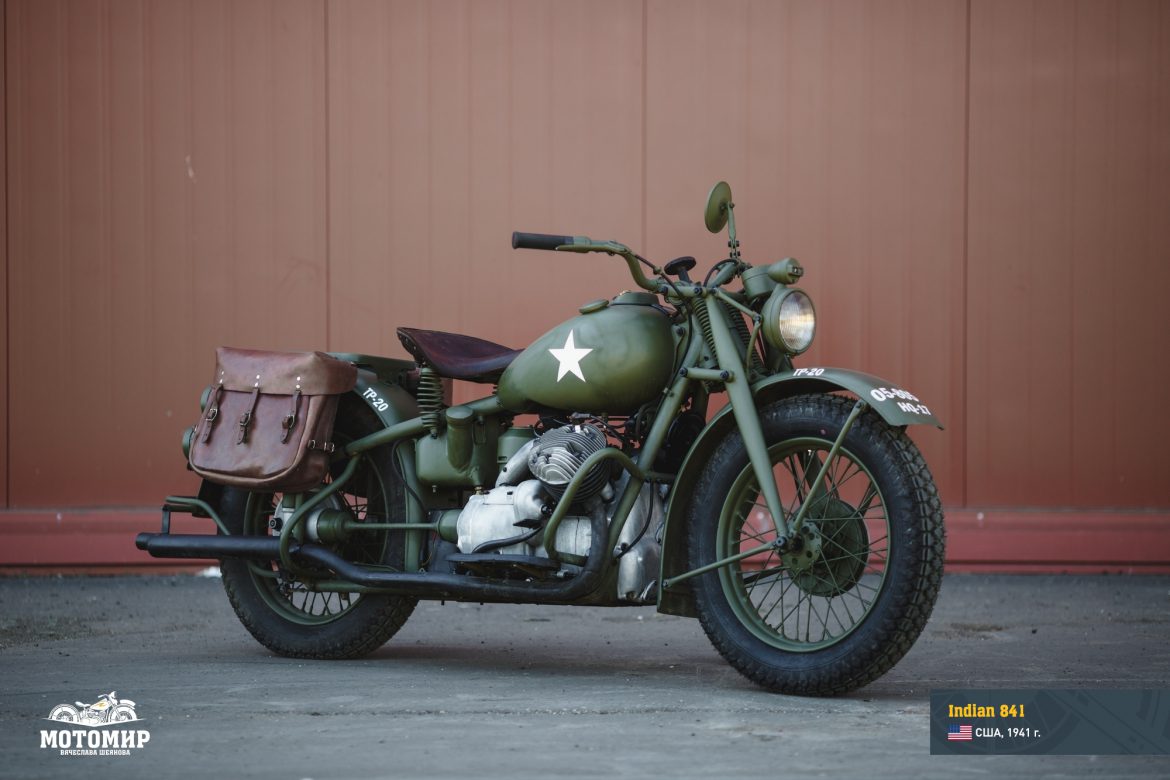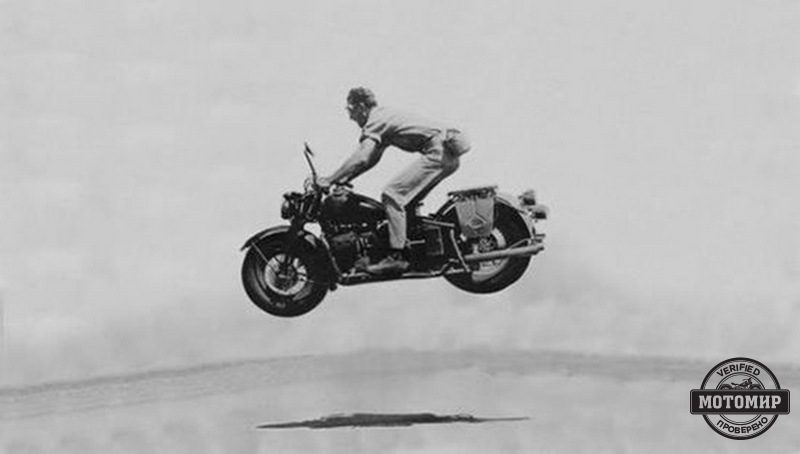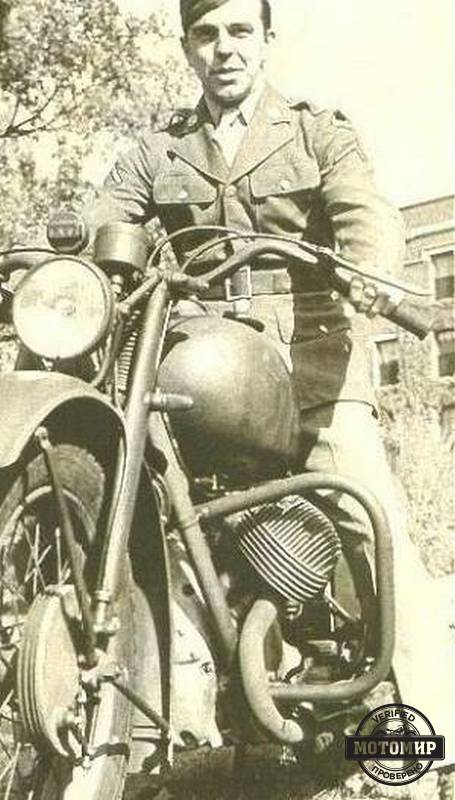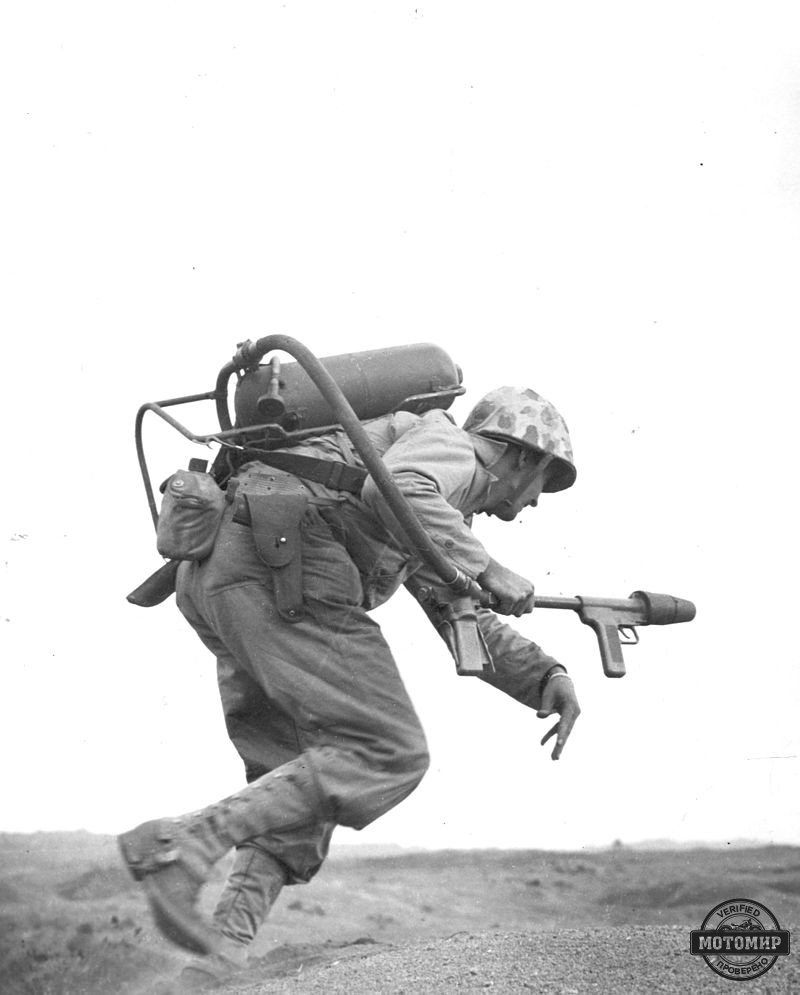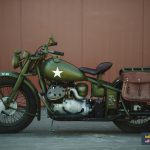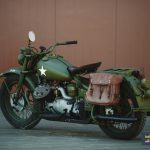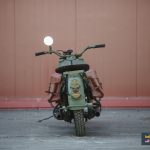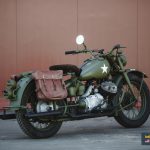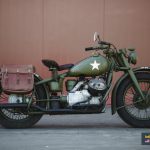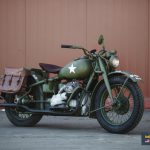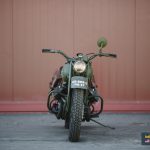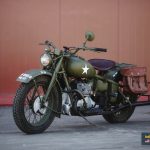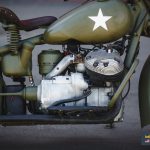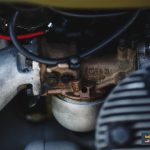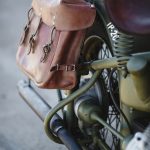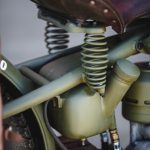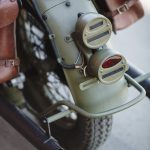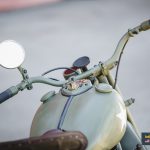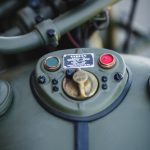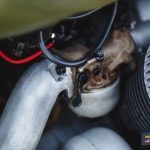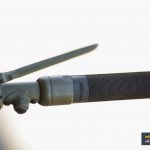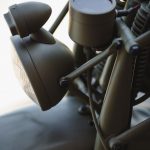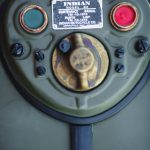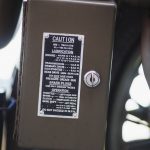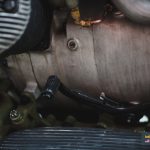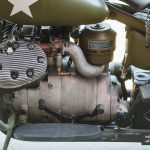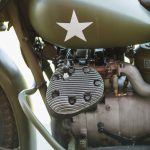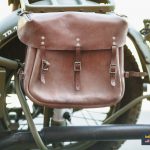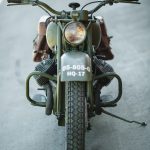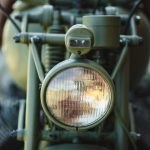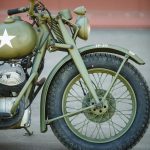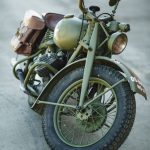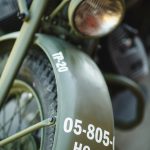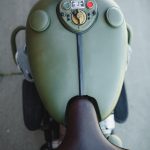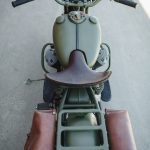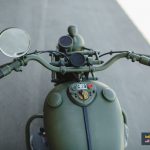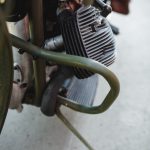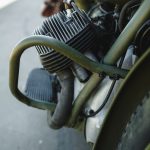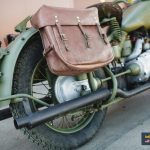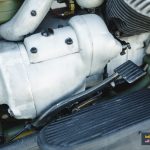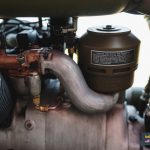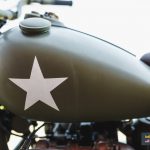This entry is also available in: Russian Chinese (Traditional)
In 1941, the U.S. government turned to Harley-Davidson and Indian with the order to develop a special motorcycle for military operations in North Africa. Harley-Davidson presented its XA model. John Nowak, a creator of the XA, almost entirely copied the German BMW R71. The design features of BMW were perfectly suited for desert warfare. The shaft drive provided better off-road capabilities, an opposed position of the cylinders provided enough cooling for the hot climate.
The flat engine of the XA model was almost an exact copy of the BMW engine. Indian company also took the ideas of German engineers but went a different way by setting the original V-type engine across the frame. Like Harley-Davidson, Indian equipped its version with a shaft drive and suspension of both wheels.
As a result, Indian 841 suffered the same fate as the Harley-Davidson XA. When the first 1,056 units came off the assembly line, the war in Africa was over.
The motorcycle, however, was very successful. Despite its size and weight (about 256 kg), it was easy to drive, and after the war, it was planned to produce a civilian version. However, these plans were not destined to come true. The motorcycles that were no longer needed by the military were sold out to the civilians.
The bike from the ‘Motoworld by V. Sheyanov’ collection has been dusting for a long time in the American Military Museum.
For help in restoration, we went to Saint Petersburg, Russia. Yuri Kotelnikov, a restorer, faced significant difficulties during the restoration of Indian 841. One of the cylinders was 0.5 mm longer than the other. Some metal parts turned into sand. In the end, Yuri decided to find out who worked on the motorcycle before him. The search revealed curious information about the former owner of the bike, who had donated it for a museum exposition in the United States.
It turned out to be Robert McClean (1923-2008), a former president of the American Association of Antique Motorcycles, a World War II veteran, one of the heroes of the legendary Battle of Iwo Jima.
In 1942, 19-years old Bob McClean joined the Marines. In 1945, he was sent to the Pacific, where as part of the 4th Division of the U.S. Marine Corps, McClean was destined to survive one of the worst battles in the history of the American Marines.
The Battle of Iwo Jima (19 February – 26 March 1945) was the battle between the Japanese Empire and the United States for Ioto Island (Iwo Jima) in the Pacific Ocean, which ended with the US victory. The Imperial Japanese Army built a strong line of defense on the island, thanks to which it was able to repel enemy attacks for a month. It wasn’t a spectacular battle, but a gradual breaking of the most powerful defensive positions of a strong and stubborn enemy. Losses of Americans were about 7,000 dead and missing and about 16,000 wounded. The Japanese lost over 21,000 people. It should be noted that the Americans captured only 111 people, of which only 67 were Japanese, and the rest were Korean workers who dug tunnels.
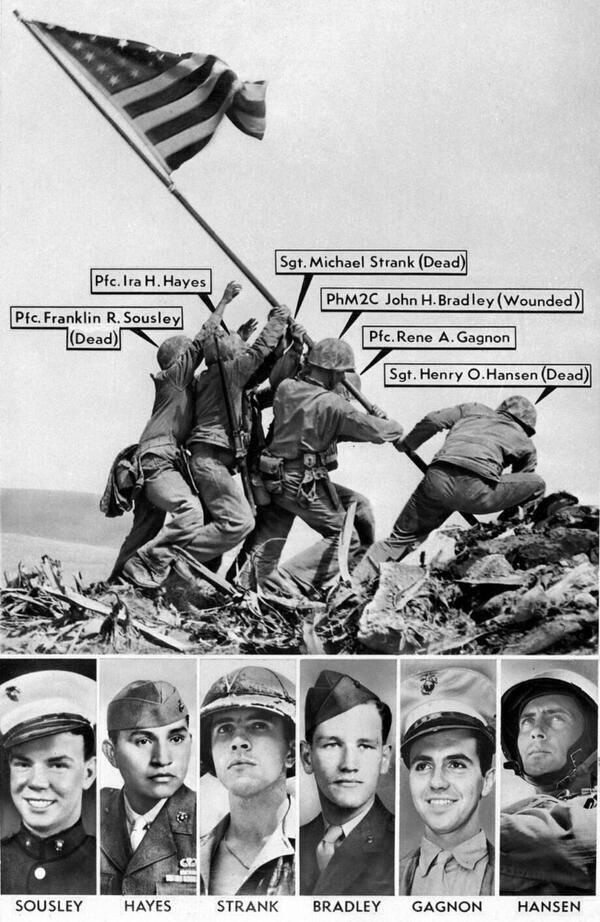
Joe Rosenthal. Flag voyage over Iwo Jima. In addition, the names and titles of six soldiers raising the flag are indicated.
Nightmares tortured Robert decades after the war. In his nightmares, he saw the eyes of the brave Japanese throwing themselves off the cliffs but not giving up. Fear, honor, and the glow of his flamethrower reflected in their eyes.
On the wall of McClean’s office hang the famous picture ‘Raising the Flag on Iwo Jima’, autographed by Joe Rosenthal. Of the six soldiers hoisting the flag, three died on the island, the other three returned home and became famous. Robert was there and could have been one of those six men. But fate didn’t give him that chance.
When Robert returned home, he got married, had children, and fell for antique motorcycles. In 1970, McClean became a member of the Iowa branch of the American Association of Antique Motorcycles. Robert loved motorcycles passionately. He traveled halfway around the world, taking part in rallies, traveled a lot on his own, and later got his own motorcycle collection. In 1983, Robert McClean was elected Chairman of the Association and remained in this position until 2002.
In 2008, Robert McClean passed away. He lived a remarkable life and made an invaluable contribution to the movement of retro-bike enthusiasts. But he never forgot about the war. As a tribute to the courage of the former enemy, next to the famous image on the wall of McClean’s office, there was a Japanese battle flag and the Order of the Rising Sun.
| Manufacturer | Indian Motorcycle Co., Springfield, Massachusetts, United States |
| Years of manufacture | 1941 |
| Quantity produced, units | 1 056 |
| Price | N/A |
| Today’s value | N/A |
| ENGINE AND TRANSMISSION | |
| Type | V-twin |
| Engine capacity, cc | 744 |
| Bore and stroke, mm | 73 x 88,9 |
| Engine rating | 24 hp at 4000 rpm |
| Sparking | Battery |
| Carburetor | Schebler |
| Battery | 6 V |
| Clutch | Single, dry |
| Transmission | 4-speed |
| FRAME AND WHEELBASE | |
| Frame type | Tubular |
| Front suspension | Parallelogram with friction damper |
| Rear suspension | Candle-type |
| Brakes | Drum type |
| Wheel size | 4,50 x 18 |
| DIMENSIONS | |
| Length, mm |
2 305
|
| Width, mm |
934
|
| Height, mm |
1 029
|
| Wheelbase, mm |
1 499
|
| Ground clearance, mm | |
| Seat height, mm | |
| Mass, kgг |
256*
|
| Gas tank size, l |
N/A
|
| Maximum speed, km/h |
96
|
| Range, km |
N/A
|

